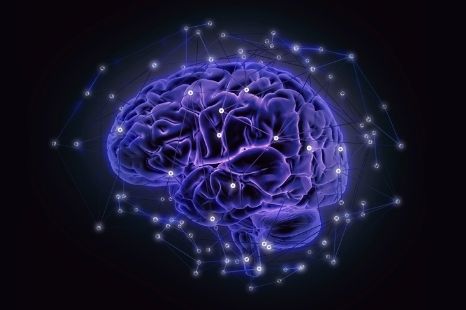Inaugural UMD Neuro-Link Grant Supports Glioblastoma Research
The University of Maryland, Baltimore (UMB) Department of Neurosurgery and the University of Maryland, College Park (UMCP) Fischell Department of Bioengineering (BIOE) awarded the inaugural Neuro-Link program grant to a team of UMB/UMCP researchers who are working to develop a novel technique to treat glioblastoma (GBM), the deadliest and most common type of adult brain cancer. Established last fall, the Neuro-Link funding opportunity provides $100,000 annually, for up to three years of support. The program aims to accelerate and elevate the impact of joint UMB/UMCP research projects to create innovative new systems, approaches, and technologies to improve patient care. “The Neuro-Link concept – inter-departmental investment in burgeoning co-faculty success across the College Park and Baltimore campuses – may be a model for other cross-campus initiatives designed to leverage the tremendous expertise within our University System,” said Department of Neurosurgery Chair Graeme F. Woodworth, M.D. “This is particularly important when seeking to address complex challenges like brain cancer, which will require highly coordinated, diverse teams to discover new effective treatments.” “This exciting new funding opportunity will help inspire College Park bioengineers and Baltimore researchers and clinicians to work together to address critical gaps in the current management of patients with complex neurosurgical problems,” said BIOE chair John P. Fisher. “This kind of collaboration represents a pivotal step toward changing the course of brain cancer and other neurological diseases.” Along with Woodworth, neurosurgery faculty members Anthony J. Kim and Jeffrey A. Winkles and BIOE faculty member Huang Chiao (Joe) Huang are principal investigators on the first Neuro-Link-funded project. Together, they are working with plasmonic technology and nanoscale engineering to improve the safety and efficacy of a laser-based procedure increasingly used to treat deep-seated, unresectable tumors, such as those found in the brain. Neurosurgeons who use this procedure – known as laser interstitial thermal therapy (LITT) – would apply a high-powered laser that essentially burns and shrinks the tumor. For decades, this kind of thermal priming has been known to increase the efficacy of subsequent radiation treatments to treat cancers. Traditionally, LITT poses unique challenges for brain cancer treatment because it is difficult to limit LITT’s thermal effects on surrounding, healthy brain tissue. Recognizing this, the Neuro-Link-backed team is working on a technique that uses specialized nanoparticles and an advanced local drug delivery strategy that bypasses the blood-brain barrier and penetrates tumor tissues to enhance how LITT targets tumor cells while significantly reducing LITT’s effect on surrounding normal brain cells. “The work proposed here by our UMB and UMCP team has the potential to reveal a new way to improve the current LITT procedure, thereby improving outcomes for both primary and recurrent GBM patients with unresectable tumors,” Winkles said. “This exciting new partnership will accelerate potential clinical translation of innovative new biomedical technologies to improve patient care,” Kim said. The research group plans to use their Neuro-Link funding to generate the data they need to compete for large, multi-investigator grants. They hope to expand their work to address broader areas of brain cancer research, including further investigation into the blood-brain tumor barrier, cancer chemoresistance, and cancer imaging and treatment. “This strategic alliance will help bridge gaps in basic knowledge and clinical experience by engaging the strengths of clinical, preclinical, and other investigators, increasing the likelihood to deliver a new medical solution for glioma patients,” Huang said.
Related Articles: February 16, 2022 Prev Next |


